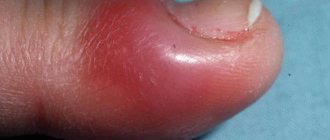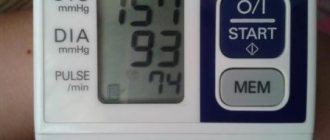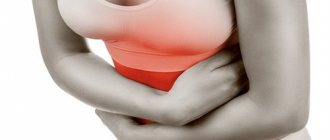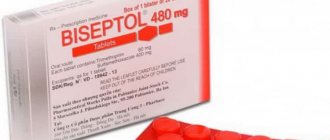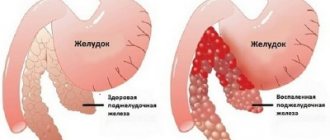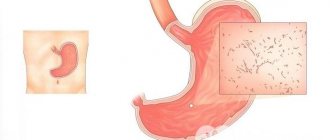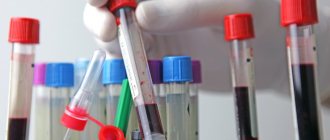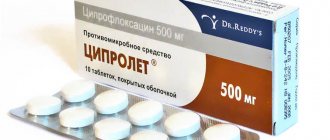Erosive gastritis is an inflammation of the gastric mucosa with the formation of erosions of various sizes on its surface (ulcerations that do not penetrate into the deep layers of the gastric wall and heal without subsequent scarring). The depth of the erosive defect is the main difference between this disease and gastric ulcer, when not only the mucous membrane is damaged, but also the underlying tissue and muscle layers.
Picture of erosive gastritis
The main danger of erosive gastritis is the possible development of bleeding from the damaged mucous membrane. According to some data, more than 20% of episodes of gastric bleeding are associated precisely with the presence of erosive gastritis.
Currently, the terminology adopted to designate pathology is being revised: more often, the definitions “hemorrhagic gastropathy” or “hemorrhagic gastritis” and “papular gastropathy” are used to designate erosive gastritis.
When performing fibrogastroduodenoscopy for complaints of digestive disorders (heartburn, pain in the epigastric region, nausea, vomiting), erosion of the gastric mucosa is recorded in 25% of cases.
Erosive gastritis occurs equally often in men and women of different age categories. In children, pathology is detected much less frequently. A number of studies indicate a multiple increase in the incidence of erosive gastritis in recent years (some sources indicate a tenfold increase in incidence), which is associated with an intense lifestyle, a high risk of exposure to stress factors, incorrect eating behavior and improved diagnostic techniques that make it possible to detect the disease even in the absence of active complaints.
Types of erosive gastritis
It is customary to distinguish two types of erosive lesions:
- Superficial (acute): characterized by small size and redness along the periphery, often covered on top with fibrinous plaque or blood.
- Full (chronic): have a polypoid shape and rise above the surface. They have a large size - up to 15 mm. They heal over a long period of time (up to three years), with periodic relapses occurring.
The acute form of erosive gastritis can eventually transform into a chronic form, which, in turn, can be a precursor to peptic ulcer disease. The disease in its chronic form is quite difficult to treat.
There are several forms of erosion:
- Primary (not related to previous pathology).
- Secondary (occurs as a consequence of a disease).
- Immature.
- Mature (with signs of necrosis).
Complications and consequences
If erosive gastritis of the stomach is ignored and you do not consult a doctor in time, the consequences of the disease can become dangerous.
- Excessive internal bleeding;
- State of shock;
- Decreased red blood cells in the blood;
With long-term exposure to destructive factors on the gastric mucosa,
- Peptic ulcer disease. The cause is focal erosive gastritis. Inflammation affects not only the mucous membrane, but also the muscle tissue of the organ. This happens due to the influence of sulfuric acid and large pieces of swallowed food. An ulcer is dangerous due to the possibility of perforation (breakthrough) of the gastric wall and transformation into oncology.
- Oncology. Constant inflammatory processes of the mucous membrane with erosive gastritis can degenerate into a malignant tumor. If stomach cancer is detected, it is partially or completely removed, followed by chemotherapy.
Causes of erosive gastritis
In most cases, the cause of gastritis is the bacterium Helicobacter Pilori. However, the microorganism does not always cause inflammatory changes in the gastric mucosa - in 60% of cases the infection occurs without any symptoms. Erosive gastritis is a polyetilogical disease. The main risk factors include:
- Frequent stress.
- Bad habits: systematic consumption of alcoholic beverages, smoking.
- Eating disorders: prolonged fasting, abuse of fatty, salty and spicy foods, overeating.
- Eating foods that irritate the stomach wall on an empty stomach.
- Taking medications that have a negative effect on the gastric mucosa (glucocorticosteroids, non-steroidal anti-inflammatory drugs).
- Chronic diseases of the gastrointestinal tract.
- Neoplasms that put pressure on the inner lining of the stomach.
- Hypoxia (injuries, burns, cardiac or respiratory failure, coma).
- Extensive surgical interventions.
- Working with harmful substances (pesticides, heavy metal salts, paint fumes).
- Failure of the gastroduodenal sphincter, leading to the reflux of the contents of the duodenum into the stomach.
Drug therapy for the disease
The erosive form of the disease requires taking certain medications, maintaining a healthy lifestyle and following a therapeutic diet. Treatment of erosive gastritis with medications and dosage regimen is prescribed by a gastroenterologist.
In complex therapy, medications are used whose action is aimed at relieving inflammation, stabilizing organ functions, and healing erosion. It is important to follow the dosage specifications for gastritis and medical recommendations.
Antibiotics
Antibacterial drugs are used to destroy pathogenic bacteria that cause disease. Three-component drug regimens are prescribed, which include a combination of an antibiotic and Trichopolum.
Most often prescribed:
- Tetracycline;
- Clarithromycin;
- Levofloxacin;
- Amoxicillin.
Antibiotic therapy eliminates the inflammatory process and inhibits the development of the disease, preventing organ ulcers and other complications. For severe pain, painkillers are prescribed.
Medicines that stabilize gastric and intestinal motility
Prescribing medications that regulate gastrointestinal motility helps prevent aggressive gastric juice from refluxing into the esophagus. To increase the tone of the organic walls, the treatment regimen for erosive gastritis is carried out with medications that affect the functioning of nerve endings.
To enhance the protection of the mucous membrane, medications are prescribed for erosive gastritis - list of tablets:
- Domperidone;
- Cerucal;
- Motilium;
- Raglan.
The products improve the functions of the beneficial microflora of the stomach and local immunity, and promote rapid recovery.
Antacids
Antacids neutralize the effect of hydrochloric acid in the stomach and avoid severe irritation of the mucous membrane. As a result, heartburn, nausea and pain stop, and heaviness in the stomach disappears.
For this purpose the following are used:
- Almagel;
- Gastal;
- Gaviscon;
- Maalok;
- Phosphalugel.
Only a doctor who understands the mechanisms of symptoms and knows all the features of the disease prescribes medications.
Enzyme preparations
De-nol, Mezim and Sucralfate products help improve the digestive process and avoid dyspeptic disorders. The drugs increase blood supply to the stomach and intestines and form a protective layer on the mucous membrane.
The medicine can be taken 2 times a day, 1 tablet. Also, to improve digestion, enzyme preparations can be taken 1/2 tablet 4 times a day.
Drugs that inhibit pepsin secretion
The regulation of gastric secretion is of great importance in the treatment of the disease. Increased pepsin activity provokes irritation of the mucous membrane and a decrease in the production of the main component of gastric mucus - mucin. Increased pepsin activity has an extremely negative effect on the condition of the gastric walls and causes erosion.
To avoid this, M-cholinergic blockers are used - Pirenzepine, Gastrocepin, Metacin, Platiphylline. Medicines affect secretion and stabilize gastric contractions. Ganglioblockers, synthetic prostaglandins, and H2-histamine blockers also have an antisecretory effect. The drugs eliminate increased stimulation of the stomach and intestines and reduce the secretion of pepsin. As a result, nausea and vomiting disappear, and abdominal pain decreases.
To correct acidity, proton pump inhibitors are prescribed - Omez, Nolpaza, Omeprozole. The drug Omez has an effective effect. It protects gastric structures from the negative effects of hydrochloric acid. Take the drug for about 2 weeks, one capsule before meals.
Drugs that help restore damaged cells
The duration of therapy largely depends on the rate of regeneration of the affected organ tissues. Restoration of the mucous membrane is provided by the drugs Akgovegin, Karbenokosol, Biogastron. The action of the drugs is aimed at enhancing the regeneration of affected cells and eliminating erosion.
The process of restoring the mucous membrane and providing it with the necessary protection is quite long. Treatment of erosion may take several months.
Important! Even if the drug seems safe, you should not self-medicate or take it without consulting your doctor.
Pain Remedies
Pain during erosion of the gastric walls can be mild. However, for severe pain, doctors recommend taking painkillers. Analgesics and antispasmodics will help relieve stomach pain. How can you cure erosive gastritis? Your doctor will tell you.
To eliminate pain the following are prescribed:
- Spasmomen;
- Papaverine;
- Hyoscyamine;
- No-shpa;
- Drotaverine;
- Papazol;
- Methocinium.
You can purchase plant-based antispasmodics at the pharmacy, which include extracts of lily of the valley, tansy, oregano and other medicinal herbs. There is nothing dangerous in treating erosive gastritis with herbal medicines.
Symptoms of erosive gastritis
The complaints with which patients consult a doctor are typical for most gastrointestinal diseases. So, the symptoms of erosive gastritis are:
- Nausea, vomiting.
- Hunger pain in the stomach (3-4 hours after eating).
- Bloating, belching, heartburn.
- Decreased appetite and weight loss.
- Weakness, drowsiness, decreased performance.
- Shortness of breath, tachycardia.
- Vomiting coffee grounds. The dark color of the masses indicates the presence of internal bleeding.
- The characteristic tarry stool is melena.
Black stool is one of the main signs of erosive gastritis, which can be used to diagnose gastric bleeding. Under the influence of gastric enzymes, hemoglobin, which gives blood its red color, is converted into hemin. It, in turn, has a dark brown tint.
The danger is that erosions can begin to bleed over time - 20% of cases of gastric bleeding are associated precisely with erosive gastritis.
Ulcerative gastritis: symptoms and treatment
Gastritis can be asymptomatic. Therefore, erosions that appear at an early stage of the disease are quite difficult to detect by any signs. The symptoms of the disease with and without the formation of erosion are practically the same.
Indirect signs may indicate the presence of pockets of erosion.
Symptoms of ulcerative gastritis:
- Discomfort or pain in the right hypochondrium. These can be either rather mild painful manifestations or those requiring the use of analgesics;
- Regularly feel heartburn after eating. This indicates the presence of reflux - the backflow of part of the food from the esophagus into the stomach along with gastric juice;
- Manifestations of dyspepsia—difficulty in digestion, heaviness, and a feeling of fullness—are common. Stool disturbances (loose or constipation) are also possible. An unpleasant-smelling belch may be present;
- If the previous meal was a long time ago, pain may occur in the stomach and right hypochondrium. They are caused by hydrochloric acid, which irritates erosive areas.
If, when collecting an anamnesis (history of the disease), the doctor determines the presence of most of the listed signs, he may suspect the development of ulcerative gastritis and will prescribe an examination using laboratory and instrumental methods.
Diagnostics
The examination of the patient begins with a history and physical examination.
To accurately determine the presence of erosive lesions of the gastric mucosa, laboratory and instrumental studies are required.
Laboratory methods:
- General blood test, general urine test, coprogram.
- Fecal occult blood test.
- Bacteriological analysis of stomach contents and feces.
- Immunological blood test.
- Histological and cytological examination of a biopsy taken at fibrogastroduodenoscopy (FGDS).
- Tests for the determination of H. Pylori.
Instrumental methods:
- FGDS is the most modern method for studying the internal organs of the gastrointestinal tract. The procedure allows you to obtain detailed information about the condition of the gastric mucosa, take photographs of the areas being examined, perform a biopsy and take material for a test to determine the bacterium H. Pylori.
- X-ray with a contrast agent makes it possible to identify motor-evacuation disorders and exclude the presence of more serious diseases.
- Thermography is a modern and highly informative method for diagnosing the condition of the gastrointestinal tract. Detects disturbances in the functioning of internal organs using infrared radiation.
The symptoms of erosive gastritis are similar to those of peptic ulcer disease. When making a diagnosis, they primarily rely on the results of FGDS. The condition of the lesions determines whether a diagnosis of erosive gastritis can be made. During an endoscopic examination, doctors determine the presence of redness, swelling and bleeding of the mucous membrane. In this case, the acidity of the stomach may be normal or slightly reduced.
You can distinguish erosive gastritis from other forms of gastritis by dark, granular vomit and black stools - all this indicates gastric bleeding. Prolonged blood loss leads to anemia.
How to treat erosive ulcerative gastritis
If you have acute unbearable pain in the upper abdomen, and any food eaten causes a feeling of heaviness, then suspicion falls on erosive gastritis of the stomach. If vomiting with bloody discharge is added to the pain symptoms, then you need to sound the alarm and begin urgent treatment.
Gastritis is a disease caused by inflammation of the gastric mucosa. Its erosive form is the stage of the disease when the mucous membrane begins to collapse, defects appear, and bleeding occurs. This type progresses slowly. Often, erosive gastritis of the stomach occurs as a reaction to another disease, nervous or physical stress or injury.
Erosive gastritis of the stomach can be chronic and acute. The latter type progresses with terrifying speed if maintained by a stressful environment. The chronic form is characterized by many areas of damage to the gastric mucosa. There is also erosive gastroduodenitis, when the duodenum is also corroded. The disease is a prerequisite for the development of peptic ulcer disease.
An acute type of erosive gastritis of the stomach can be triggered by liver or kidney failure, significant burns, severe injuries, severe blood loss and sepsis. Often, when the patient already has a severe form of the disease, it is difficult to understand what is happening. Symptoms of acute gastritis may include dark, tarry-looking stools, also called melena, and bloody vomiting, but these often indicate other gastrointestinal problems such as ulcers.
Erosive antral gastritis is characterized by the fact that many erosions appear on the surface of the mucous membrane, which resemble ulcers. Their presence leads to severe pain. This type of chronic disease is difficult to cure and is fraught with various complications. Erosive antrum gastritis is type “B”. Infection occurs with the bacteria Helicobacter pylori, penetrating from the antrum of the stomach, from the alkaline environment located under the mucosa.
With this form of gastritis, bleeding becomes common. Both erosive and inflammatory processes occur in the mucosa. The cause of development may be injuries to the mucous membrane or high permeability of the gastric vasculature. About a third of all cases of gastric bleeding are caused by hemorrhagic erosive gastritis. This form looks like cracks scattered throughout the mucous area.
With acute erosive gastritis, there may be signs such as a feeling of tension and heaviness after eating and increasing dull pain. The patient will experience heartburn and nausea, and may vomit blood. The latter may still be in the feces; the stool will vary in consistency. Erosive acute gastritis often appears unexpectedly, then the disease will develop quickly. There may be phenomena such as flatulence and loss of appetite.
If a person has symptoms of erosive gastritis of the stomach, he should be prepared for endoscopic examination. In this case, an endoscope is inserted into the esophagus - a tube ending with a camera; the equipment allows you to see the condition of the mucous membrane of the organ and identify erosive ulcers on it. Such an examination will also help determine the presence of antral gastritis. In addition to endoscopy, it is recommended to undergo a stool test and a general blood test.
Considering that the disease is similar in symptoms to the manifestations of a stomach ulcer, treatment of erosive gastritis of the stomach will follow the same scenario. The doctor will select medications in accordance with the complexity, severity of the disease, stomach acidity, and the presence of other problems. Antibiotics, agents to normalize acid levels, and drugs that accelerate mucosal regeneration are often used.
Treatment may include the use of alternative medicine. Thus, it is believed that sea buckthorn oil helps in eliminating lesions. Aloe juice and alkali-containing mineral waters are used for the same purposes. An important condition will be to follow the doctor’s recommendations in selecting a dietary menu. Proper home nutrition will shorten the long treatment period.
To relieve excessive secretion of gastric juice, appropriate agents are used, such as proton pumps and histamine receptor blockers. The first ones used are Omez, Controloc, Lansoprazole. The latter can be represented by Kvamatel, Ranitidine, Famotidine. In order to reduce the negative effects of hydrochloric acid, Almagel, Phosphalugel, and Maalox are used. These products also form a protective coating over the inflamed areas.
If the examination has determined the Helicobacter pylori origin of erosive gastritis, then a treatment regimen is used that takes into account special agents, such as Matronidazole, Amoxicillin or Clarithromycin. Motility of the duodenum and stomach is restored with the help of Motilium, Cerucal, Metoclopramide. To stop bleeding in erosive-hemorrhagic gastritis, Dicynon, Etamzilat, Vikasol are used. Most medications are available without a doctor's prescription.
The first step is to get rid of the causes of gastritis. If the disease is caused by Helicobacter pylori bacteria, then the use of antibiotics will be mandatory. The patient will be forced to take Clarithromycin, Tetracycline, Levofloxacin for a long time. It is unacceptable to interrupt the use of antibiotics, since bacteria will again fill the acquired space, returning the patient to the initial, if not worse, state.
The next stage, which is important in treatment, is normalizing the acidity level. The mucous membrane affected by erosion must be saved from its aggressive effects, for which purpose even the chemical composition of acidity is corrected. The patient is prescribed antacid medications and acid blockers, such as Maalox, Rennie and others. You should not experiment with medications without consulting your doctor.
Chronic erosive gastritis cannot be cured without following certain gastronomic rules. If there is an inflammatory process, doctors prescribe dietary table No. 1. As soon as the exacerbation passes, the patient moves to table No. 5. Nutrition for gastric erosion has its own rules:
- You should not eat food that leads to increased gastric secretion and irritates the mucous membrane (fried and fatty foods, with spices, smoked foods, pickled foods, salted foods).
- The menu includes fresh foods that need to be boiled or cooked in a double boiler.
- Eat often, in small portions.
- Cooked dishes should not be at critical temperatures; it is better to eat them warm.
- Prohibited: freshly baked bread and pastries made from butter flour, chocolate candies, cookies.
source
Erosive-ulcerative gastritis is a rather serious disease that is difficult to treat. In order to effectively eliminate the disease, it is necessary to identify it at an early stage of development. This will avoid complications and other unpleasant consequences.
Gastritis is a pathological process accompanied by inflammation of the gastric mucosa. The erosive-ulcerative form of gastritis is characterized by the onset of destruction of the mucous membrane, the appearance of various defects and the presence of bleeding. This type of disease progresses very slowly. In many cases, erosive gastritis develops against the background of other pathologies and mechanical damage.
Treatment
Surgical methods are used extremely rarely in cases of erosive gastritis. Most often, treatment is carried out using conservative methods. Complex therapy involves the following methods:
- Drug treatment aimed at destroying the H. Pylori bacterium, relieving painful symptoms and healing erosions.
- If there is bleeding, injections of healing drugs.
- Therapeutic diet.
The H. Pylori bacterium is eliminated during multi-stage treatment, which includes taking histamine blockers, antibacterial drugs and gastroprotectors. The average course duration is one month. In order to eliminate the symptoms of the disease and heal existing lesions, the following medications are prescribed:
- Proton pump inhibitors such as Omeprazole and Enprostil. They reduce the secretion of hydrochloric acid and are the main group of drugs in the fight against erosive gastritis.
- Antacids.
- Antispasmodics.
- Reparants.
- Antioxidants.
- Sedatives.
With erosive gastritis, diet is a necessary step, without which drug treatment will be less effective. Food should be taken 5-6 times a day in small portions.
The acute form of erosive gastritis can eventually transform into a chronic form, which, in turn, can be a precursor to peptic ulcer disease.
The diet for erosive gastritis is based on the principles of mechanical, thermal and chemical sparing.
- Mechanical sparing - eating food in a ground form. This method of eating minimizes the traumatic effect on the walls of the stomach.
- Thermal sparing - avoiding thermal effects; food should not be too hot or cold.
- Chemical sparing - refusal of carbonated drinks, tea, coffee and alcohol, as well as exclusion of salty, fatty and spicy foods from the menu. Food should be steamed or boiled. It is acceptable to eat porridge with water, vegetables and fish, and lean soups.
After a course of therapy, regular visits to a gastroenterologist are required to avoid relapse. If conservative treatment fails to achieve positive results, surgical methods are resorted to.
Surgical methods for treating erosive gastritis include:
- Electrocoagulation or endoscopic clipping of a bleeding vessel.
- Gastrotomy followed by the application of staples or suturing of bleeding erosions.
Nutritional Features
Treatment of erosive gastritis is impossible without dietary restrictions. In the first hours of an exacerbation, the patient is prescribed complete fasting. Fasting therapy can last from 6 to 24 hours, depending on the severity of the condition. A day later, dishes prepared in a double boiler or boiled are introduced into the menu. Meals for erosive gastritis of the stomach must be fractional (often in small portions).
Properly selected treatment and diet can alleviate the patient’s condition in a short time.
What is prohibited
Erosive gastritis requires adherence to a certain diet; many ingredients are strictly prohibited.
- Baked goods, freshly baked bread;
- Rich meat and fish broths;
- Mushrooms;
- Spicy and pickled soups;
- Greasy meats and fish;
- Canned, pickled, spicy and salty foods;
- Pearl barley, barley, and corn grits;
- Fermented milk products with a high percentage of fat and acid;
- Cabbage, radish, tomato;
- Beans, peas;
- Liquids containing alcohol;
- Concentrated coffee and tea;
- Chocolate products.
The diet for erosive gastritis of the stomach should reduce the production of hydrochloric acid, therefore limiting the consumption of protein and fatty foods. Meat can be eaten 1 r. per day in small quantities.
What is possible
- Dried wheat bread;
- Grinded cereal soups with milk or vegetable broth;
- Milk;
- Protein omelet;
- Banana puree;
- Berry jelly with a neutral taste;
- Semolina, buckwheat and rice;
- Poultry or beef ground in a meat grinder;
- Potato, zucchini and cauliflower puree;
- Pasta.
Nutrition for erosive gastritis of the stomach should be balanced. The list of permitted products allows you to develop a fairly diverse menu for erosive gastritis. It is not recommended to eat scalding or icy food. The diet for erosive gastritis of the stomach excludes the consumption of “fast foods”.
Approximate diet
- Morning. Well-cooked rice with milk and butter. Long loaf cracker, jelly;
- Snack. Sandwich made from a dried loaf with cheese, weak tea;
- Day. Grated vegetable soup with cauliflower and buckwheat, mashed potatoes with meat soufflé, compote, wheat croutons;
- Snack. Biscuits with milk, banana;
- Evening. Low-fat cottage cheese casserole, crackers with rosehip tea.
Desserts should be replaced with baked fruits with low sugar content.
prevention of disease. Experts recommend eating at night for erosive gastritis of the stomach no later than 2 hours before bedtime.
Therapeutic nutrition for erosive gastritis occupies a very important position. This diet includes the following:
- Complete cessation of smoking and drinking alcohol.
- Refusal to fast, as this leads to even more severe pain.
- The basis of the diet should be pureed boiled fish, meat and vegetables. You can also eat soups, dairy products and casseroles made from vegetables or cottage cheese.
- Eating seafood and vegetable purees is beneficial.
- The consumption of fatty, fried and spicy foods, as well as sausages, salted fish and processed foods is strictly prohibited.
- You need to eat often, but not in large portions, so as not to overstrain your stomach.
- Salt, hot sauces and sour fruits should be completely excluded from the menu.
- Green tea, a decoction of dried fruits or rose hips are allowed as liquids. Alkaline mineralized waters are also very beneficial.
The patient should forget about coffee, black tea and sweet carbonated drinks.
Nutrition for gastritis with high acidity also has its own characteristics, which you can read about here.
Site doctor: Anton Palaznikov
Gastroenterologist, therapist
Work experience more than 7 years.
Professional skills: diagnosis and treatment of diseases of the gastrointestinal tract and biliary system.
Preventive measures
Erosive gastritis is one of the forms of chronic gastritis, in which the inflammatory process is accompanied by the formation of erosions of various sizes.
- Maintaining a balanced diet, avoiding fast food and other foods that irritate the gastric mucosa.
- Timely treatment of chronic diseases of the gastrointestinal tract.
- Maintaining good personal hygiene will reduce the risk of infection with the H. Pylori bacterium.
- Normalization of the psycho-emotional state in order to reduce the negative impact of stress and mental overload.
- Compliance with safety measures to minimize the toxic effects of chemicals on the body when working in hazardous industries.
Video from YouTube on the topic of the article:
Treatment with physiotherapy and traditional methods
Physiotherapeutic methods of treatment can reduce painful manifestations, have an anti-inflammatory effect, accelerate the course of regeneration processes, and improve blood circulation in the affected tissues.
In acute conditions the following are indicated:
- Electrical treatment;
- Ultrasound therapy;
- Magnetotherapy;
- Electrophoresis with the use of antispasmodic and painkillers;
- Galvanization.
Patients with ulcerative gastritis are also offered auxiliary procedures - mud therapy, paraffin therapy, ozokerite, baths with mineral water, sea salt, valerian.
The goal of herbal therapy is to relieve pain, slow down the inflammatory process, and normalize intestinal function.
Among the popular recipes is also a decoction of birch bark. Pieces of bark are steamed overnight in a thermos, then drunk 3 times a day 30 minutes before meals.
With high acidity, fresh potato juice helps. Squeeze it out and drink it fresh in a glass on an empty stomach.
Erosive gastritis, symptoms and treatment of this disease - these issues are the responsibility of a gastroenterologist. Among diseases of the gastrointestinal tract, one of the most common is erosive gastritis of the stomach, in people of different ages, professions and lifestyles.
Fasting for gastritis and ulcers
In case of acute development of the disease in the first two days, gastroenterologists recommend dry fasting. During this time, the human body must get rid of all food that the digestive organs are not able to digest. You are only allowed to drink a little water. Only on the third day can you introduce non-rich broths, pureed soups, and drink tea with lemon and bee honey into your diet. Semolina porridge and jelly will be good helpers for a weakened stomach. On the 5th - 6th day you can already eat steamed omelettes, low-fat boiled fish and meat. A gastroenterologist will help you choose the right diet based on the examination.
In addition to dietary nutrition, the selection of medications is of no small importance. It should be noted that various herbal preparations are not able to completely replace medications during the period of exacerbation of gastritis with the formation of ulcers. Healing infusions are usually taken in combination with medications. The doctor conducting the treatment selects medications based on the level of gastric acidity. For increased acidity, take Ultop, Gistak, Omeprazole. For low acidity, gastric juice substitutes are used.
Quite often enzymes are prescribed - Wobenzym, Panzinorm, Creon. The drug Venter has the ability to heal the gastric mucosa, and Dalargin and Cytotec can restore damaged areas. Of course, for the ulcerative type of gastritis, split meals and bed rest are recommended. It is important to lead a healthy lifestyle, because preventing a disease is easier than curing a dangerous illness. Take care of yourself!
Erosive-hemorrhagic form of the disease
One of the most serious complications of the disease is the development of erosive-hemorrhagic gastritis, a characteristic feature of which is gastric bleeding. Extensive erosions and small ulcers located in groups bleed much more often. Single lesions rarely bleed. In order for erosive gastritis to move into the hemorrhagic stage, the erosions must deepen down to the vessels and veins. Due to the individual characteristics of the structure of the vascular network, people with the same diagnosis have a different likelihood of developing bleeding. The risk group for the development of bleeding with gastritis includes:
- patients with arterial hypertension;
- patients with diseases associated with poor blood clotting;
- people who regularly take the following medications: 1. anticoagulant drugs (aspirin and its derivatives); 2. non-steroidal painkillers; 3. anti-inflammatory drugs.
The following symptoms indicate the development of gastric bleeding against the background of erosive gastritis:
- reduction of pain (the easier it becomes, the more serious the blood loss);
- vomiting with the presence of blood (fresh scarlet blood means ongoing bleeding; brown, coagulated blood means that the attack has been temporarily stopped);
- signs of anemia that developed against the background of large blood loss: 1. pallor of the skin; 2. low blood pressure; 3. dizziness; 4. weakness; 5. fainting state; 6. increased heart rate.
- Dark-colored stool in the absence of vomiting indicates scanty but constant bleeding in the stomach.
Symptoms of the disease
Erosive gastritis, unlike other types, has pronounced symptoms, which can be used to determine the presence of a serious indigestion. If you find yourself with several of the described signs, you need to immediately contact a specialist.
This disease can occur in two forms: acute and chronic. If the disease occurs for the first time, it takes on an acute form and has more pronounced symptoms. Pain sensations in the abdominal area are sharp and bright, and they can be of a different nature.
The pain can be cramping, when it fades and appears again, or there is a constant sharp pain that gives no rest. If the disease is advanced and has become chronic, pain may not be as pronounced and appear from time to time.
In addition to painful manifestations in the abdominal area, erosive and ulcerative disease may have the following symptoms:
- nausea, heartburn, sour belching, vomiting with bloody discharge;
- lack of appetite, general weakness of the body, dizziness;
- discomfort in the abdomen, pain on palpation;
- pain in the stomach occurs when a person is hungry. While eating, the pain may subside, but after eating it appears again;
- disruption of the intestinal tract: bloating, constipation, diarrhea;
- elevated temperature.
Common causes of the disease
According to gastroenterologist Anatoly Bliznyuk, the main cause of any form of gastritis is chronic stress, which more often occurs in restless, nervous, and embittered people.
Constant tension disrupts the processes of food digestion, and the motor and secretory functions of the stomach suffer. If we add here the heavy load associated with poor nutrition, alcohol, overeating, as well as Helicobacter infection, gastritis is inevitable. The formation of erosions on the mucous membrane is not accidental; there are additional provoking factors, here they are:
- Presence of infection. The Helicobacter bacterium has amazing endurance. She not only feels great in an aggressive gastric environment, but also reproduces well. Moving along the mucous membrane, the bacterium violates its integrity. Thus, hydrochloric acid becomes a constant irritant to the mucous membrane, and erosions are formed.
- Increased acidity . The principle of erosion formation in this case is the same; damage occurs due to the constant irritating effect of acid. If a person eats irregularly, allows starvation diets and long breaks between meals, the stomach begins to “eat itself.”
- Taking certain medications regularly. Long-term use of non-steroids, anticoagulants, and some hormonal drugs leads to damage to the mucous membrane.
- Other diseases of the digestive tract: Crohn's disease, bile reflux, etc.
- Exposure to radiation . Erosive gastritis often develops in cancer patients who have undergone radiation therapy.
- Surgical interventions on the stomach.
- Smoking and alcohol. Even with normal acidity, regular drinking and smoking causes inflammation of the mucous membrane. Interestingly, for smokers, a more typical disease is peptic ulcer, that is, inflammation bypasses the erosive stage and immediately transforms into an ulcer.
Erosive gastritis is characterized by a protracted course and does not respond well to drug therapy. In severe cases, the disease is complicated by bleeding from damaged areas; if there are many of them, the bleeding becomes life-threatening for the patient. The localization of erosions is different: they occur both in the body and in the fundus of the stomach, but the most favorite localization is the antrum.
Prevention
Prevention of erosive gastritis should be carried out in two directions:
- Public activities include sanitary supervision of public catering establishments. Control is carried out over the quality of food, the cleanliness of kitchen linen and utensils. All kitchen workers must undergo regular hygiene inspections and an annual medical examination.
- An important role in the prevention of erosive gastritis of the stomach is played by health education work with people, which explains the importance of maintaining food hygiene.
- Individual prevention measures include dietary management. The menu should be complete and include all the necessary substances. Food preparation must comply with hygiene rules. Vegetables should be washed well under running water and avoid eating half-raw meat and fish. Compliance with food storage rules will protect them from infection by harmful bacteria.
All patients with erosive gastritis should undergo examination 2 times. in year.
Every patient with erosive gastritis of the stomach should have a doctor whom he trusts. It is with him that issues related to treatment, nutrition and disease prevention should be discussed.
Numerous diseases of the gastrointestinal tract are now quite common. As a result of poor nutrition, stress and other factors, various disorders of the stomach appear. Erosive-ulcerative gastritis is one of these serious diseases that is difficult to treat. If possible, it is necessary to identify it as quickly as possible to avoid even greater trouble.
Causes
The provocateur of the spread of gastrointestinal diseases in modern society is the very way of life of a person in the 21st century. Lack of a diet, preference for widely advertised carbohydrate foods, lunches and dinners “on the go,” drinking sugary carbonated drinks, and addiction to smoking are factors that contribute to diseases of the stomach and intestines.
Reasons for the development of chronic ulcerative gastritis:
- constant stress, strong psychological stress;
- improper diet planning;
- unbalanced menu, “junk” food;
- taking antibiotics;
- Helicobacter infection;
- bad ecology;
- working conditions harmful to the body;
- blood and heart diseases;
- drinking heavy alcoholic beverages;
- heredity.
Heartburn and belching, nausea and vomiting, problems with stool, a feeling of bloating and an unpleasant taste in the mouth are familiar to everyone. They indicate malfunctions in the digestive tract and require careful examination for accurate diagnosis and treatment.
Types of disease
Pathology occurs in various forms, each of which has its own symptoms. According to the stage of development of the pathology and its localization in medicine, several types of erosive gastritis are distinguished:
- Acute form. Pathological processes develop rapidly. Shallow, isolated lesions form on the gastric mucosa. Acute erosive gastritis is triggered by injuries, burns resulting from the consumption of toxic liquids. Dyspeptic symptoms in a patient in serious condition are not easy to identify. Therefore, the disease can be identified by bloody spots in the stool.
- Chronic course of erosive gastritis of the stomach. It occurs especially often, equally in both men and women. In addition, with erosive gastritis, the symptoms and treatment in adults and children are practically no different. Poor nutrition and long-term use of medications lead to illness. The formation of extensive inflammatory processes on the gastric mucosa is characteristic.
- Idiopathic form. Symptoms characteristic of the disease are practically absent. Patients usually go to the doctor after the appearance of stomach bleeding.
- Antral erosive gastritis. It is formed during the active reproduction of Helicobacter pylori in the lower part of the stomach. Under the influence of the toxins they produce, which irritate the mucous membrane, inflammation develops. In this case, the damaged tissue is unable to regenerate.
- Erosive reflux gastritis. When the contents of the duodenum reflux into the stomach, ulcers are formed that quickly increase in size. The affected tissues peel off, and their fragments come out along with the vomit. Scarring of ulcers causes narrowing of the lumen of the esophagus.
For each type of erosive gastritis, symptoms and treatment have their own characteristics. To identify the disease, a thorough examination of the patient is carried out.
Features of the disease
This disease is a complex type of gastritis, which is characterized by a severe course and can lead to much more serious consequences. Treatment of the disease, due to its specificity, can take a long period.
With any form of gastritis, a person experiences disruption of the gastric mucosa. Erosive-ulcerative disease is characterized by the fact that hydrochloric acid contained in the digestive enzyme penetrates the mucous membrane of the stomach walls and corrodes them. This disease is characterized by increased secretion of stomach acid, with increased acidity.
A distinctive feature of erosive gastritis is that its acute form develops very quickly, within a few hours. Multiple lesions (erosions) form on the epithelial or surface layer of the walls, which can bleed. Subsequently, ulcers of various sizes appear in their place. If gastritis is not treated, the process progresses and becomes chronic, the treatment of which requires a more serious approach.
With timely and correct treatment, erosive formations disappear without consequences. The epithelium is restored, mucosal defects heal without leaving scars.
GALINA SAVINA: “How easy it is to cure gastritis at home in 1 month. A proven method is to write down the recipe. » Read more >>
Drugs to eliminate Helicobacter pylori infection
Previously, there was an opinion that the development of gastritis is caused by stressful situations and nutritional disorders. However, then scientists were able to identify the bacterium Helicobacter pylori, which lives exclusively in the stomach.
Under certain conditions, these microorganisms begin to actively multiply, leading to the destruction of mucous membranes. As a result, inflammation develops in the digestive organ. Antibacterial therapy allows you to cope with the disease.
The use of antibiotics for the treatment of gastritis is implied by international protocols for the treatment of pathologies of the digestive system. There are several standard schemes for eliminating infection.
Bacterial microorganisms are sensitive to the following antibiotics:
- Amoxicillin;
- Clarithromycin;
- Roxithromycin;
- Azithromycin;
- Rifampicin.
Doctors may also recommend antimicrobial medications. The most effective include furazolidone, tinidazole, metronidazole.
Antibacterial and antimicrobial drugs should be used in combination with proton pump inhibitors. These include omez, pantoprazole, omeprazole. This is due to the fact that bacteria are most active in an acidic environment. The disease can only be dealt with by suppressing secretion.
To enhance the effect, another substance for gastritis can be used - de-nol. This medicine includes bismuth compounds and produces a protective effect against erosive gastritis and ulcers. When the substance enters the stomach, it forms a protective film on the surface of the affected areas of the epithelium. This helps to avoid the effects of acid and Helicobacter pylori infection.
There are substances that, when used for a long time, can provoke stomach irritation and lead to gastritis. These include aspirin and some painkillers - nimesulide, ibuprofen, indomethacin.
Also dangerous are hormonal substances - medrol, prednisolone, dexamethasone.
Therefore, for people who are forced to use such substances for a long time, the doctor prescribes products that protect the mucous membranes of the stomach. Most often these include proton pump inhibitors. This category includes omeprazole.
Traditional methods
If the acute period is treated only with medications, then the chronic process allows therapy with folk remedies. It is thanks to them that the following changes can be achieved:
- healing of erosions;
- improved digestion;
- relieving inflammation;
- reduction of swelling;
- increasing immunity.
In addition, folk remedies can relieve symptoms associated with high acidity. This will allow you to stop taking pills and help maintain a normal stomach condition. Sea buckthorn is especially often used at home. It promotes wound healing and creates a protective layer on the mucous membrane. Take a spoon before meals. Instead of oil, you can use juice, but only after diluting with water.
Sea buckthorn juice helps heal erosions on the walls of the stomach
Often reference books with folk remedies mention aloe. Leaf juice also promotes regeneration and increases local immunity. If the bitter taste does not allow you to use the juice in its pure form, you can prepare a mixture with the addition of honey.
Wheat sprouts perfectly increase the speed of regeneration. The gruel should be taken with a spoon before meals. For inflammation, you can drink juices squeezed immediately before use. Apples, beets, and carrots are suitable. But if you have inflammation with high acidity, you should avoid pineapple juice. You can also use mumiyo, decoctions of herbs such as chamomile, cucumber, fennel, St. John's wort and so on for treatment.
Folk remedies should be used very carefully and only in the absence of signs of exacerbation. In any case, it is better to see a doctor and, together with him, determine how much to drink certain herbs and how to treat erosive gastritis without resorting to medications.
How to treat gastritis with folk remedies, watch the video:

